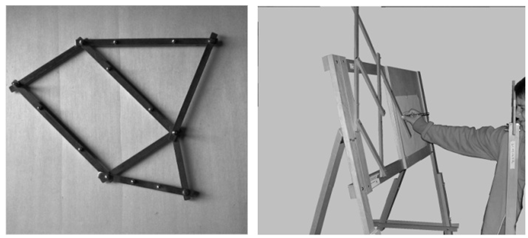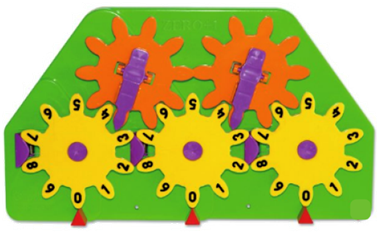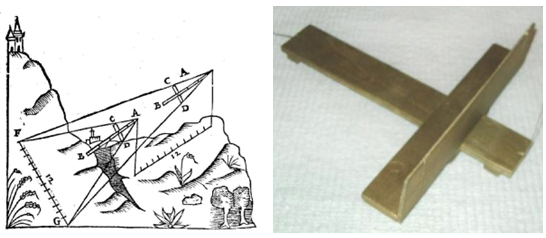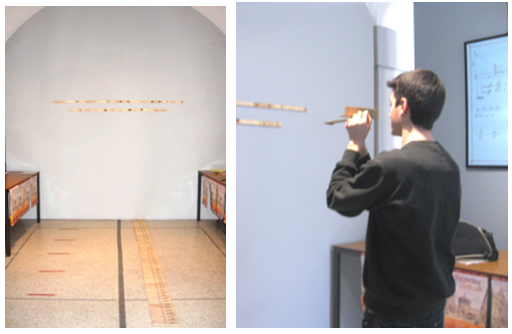-
Paper Information
- Previous Paper
- Paper Submission
-
Journal Information
- About This Journal
- Editorial Board
- Current Issue
- Archive
- Author Guidelines
- Contact Us
Education
p-ISSN: 2162-9463 e-ISSN: 2162-8467
2017; 7(3): 47-52
doi:10.5923/j.edu.20170703.02

The Laboratory of Mathematical Machines: Exhibitions, Educational Research and Sessions for Students
Michela Maschietto1, Marco Turrini2
1Laboratorio delle Macchine Matematiche, Department of Education and Humanities, University of Modena e Reggio Emilia, Reggio Emilia, Italy
2Liceo Scientifico Tassoni, MIUR, Associazione Macchine Matematiche, Modena, Italy
Correspondence to: Michela Maschietto, Laboratorio delle Macchine Matematiche, Department of Education and Humanities, University of Modena e Reggio Emilia, Reggio Emilia, Italy.
| Email: |  |
Copyright © 2017 Scientific & Academic Publishing. All Rights Reserved.
This work is licensed under the Creative Commons Attribution International License (CC BY).
http://creativecommons.org/licenses/by/4.0/

In this paper, we present the different kinds of activity involving the Laboratory of Mathematical Machines of the University of Modena e Reggio Emilia and its collection of instruments, the mathematical machines. They are copies of historical instruments, constructed with an educational aim but also used in the popularization of mathematics.
Keywords: Exhibition, Learning, Mathematical machines
Cite this paper: Michela Maschietto, Marco Turrini, The Laboratory of Mathematical Machines: Exhibitions, Educational Research and Sessions for Students, Education, Vol. 7 No. 3, 2017, pp. 47-52. doi: 10.5923/j.edu.20170703.02.
Article Outline
1. First of all, What is a Mathematical Machine?
- A mathematical machine (related to the field of geometry) is an artifact designed and built for the following purpose, which does not depend on the practical use (if any): it aims at forcing a point, a line segment or a plane figure (supported by a material support that makes them visible and touchable) to move or to be transformed according to a mathematical law that has been determined by the designer [1]. The most well-known mathematical machine is the pair of compasses, to draw circles. It is the ancestor of many curve drawing devices and pantographs (Figure 1, on the left). Another class of mathematical machines is given by perspectographs (Figure 1, on the right) that are related to the roots of projective geometry and the tridimensional theory of conic sections.
 | Figure 1. Pantograph for rotation and Scheiner’s perspectograph (from [16]) |
 | Figure 2. The arithmetical machine “pascaline Zero+1” |
2. “MMLab” and “Associazione Macchine Matematiche”
- In this section, we present the people working with the machines in several kinds of activities.
2.1. Laboratory of Mathematical Machine (MMLab)
- The Laboratory of Mathematical Machine [17] is a center for the research in mathematics education and popularization of mathematics. It belongs to the University of Modena and Reggio Emilia and is located in Modena. A certain number of mathematical machines (in particular, for geometrical transformation and conic sections) are hosted in an equipped room at the Department of Physics, Computer Sciences and Mathematics in Modena; other machines, mainly for perspective, are shown in another hall in the center of Modena. The principal components of the work carried out by MMLab are the idea of mathematics laboratory and the didactical research on the use of tools in teaching and learning mathematics. We can imagine the laboratory environment as a Renaissance workshop, in which the apprentices learn by doing, seeing, imitating, and communicating with each other and with the teacher. In laboratory activities, the construction of meanings is strictly bounded, on one hand, to the use of tools and, on the other, to the interactions between people working together. Over the years, several teaching experiments have been carried out in different Italian classes within the methodology of mathematics laboratory with mathematical machines [6]. The MMLab is also involved in projects for teacher education [7].
2.2. Associazione Macchine Matematiche (AMM)
- Some high secondary school teachers in Modena formed the group that constitutes the heart of AMM at the beginning of the years '80. They were partially dissatisfied with results obtained with the methods of teaching followed during those years. They realized that sufficient attention was not devoted to the historical development of concepts and theories, with the risk of passing students with an inadequate picture of mathematics. They also observed a marginal role of the manipulation of instruments, which nevertheless had a relevant place in mathematics history. So they started with the historical research, the construction of the mathematical machines and the introduction of those instruments in their teaching practice. This involves the “discovery” of its mathematical properties and their theoretical justification. The Association builds the machines for the MMLab, as well as for others institutions (in Italy and abroad), and has in charge their preservation. It also collaborates with the MMLab for the organization of the laboratory sessions for students in MMLab rooms, participates in teacher education programs and organization of public exhibitions. On the website of AMM [16], several resources are available: catalogs of exhibitions, historical sources, simulations of the machines by different software (Dynamic Geometry Software, Cinema4d, Java).
3. The Activities with the Mathematical Machines
- The mathematical machines are used in several kinds of activity. We first outline them in this section, while we propose some elements of their analysis in terms of informal, non-formal and formal education for discussion in the next section.
3.1. Exhibitions in Modena and Abroad
- Since the beginning, the mathematical machines were used not only with students in classes, but they were showed in public exhibitions, in Modena, and in other towns (44 exhibitions, among them two in Maubeuge-FR). These exhibitions aim to illustrate both mathematical ideas and some methodology of teaching [8]. They are partially hands-on, in the sense that several instruments are usable for public (Figure 3, on the right), while the only animator can manipulate other ones.
 | Figure 3. Dürer’s glass: original drawing (Dürer, Underweysung der Messung 1525) and our copy (on the right) |
3.2. Exhibition and Students’ Involvement
- In the edition of Perspectiva Artificialis in Cremona (2008), the exhibition was accompanied by workshops, whose organization involved some secondary school students. They first studied some mathematical machines (for instance, Figure 4, on the left) after school time; then they reproduced them (cf. Figure 4, on the right) under the guidance of their mathematics and arts teachers.
 | Figure 4. Jacob’s stick2 in [11], instrument constructed by the students (from [18]) |
 | Figure 5. Laboratory session within the exhibition (from [18]) |
3.3. Mathematics Laboratory Sessions for Students, Outside and Inside the Classroom
- In the equipped rooms, we propose laboratory sessions to secondary school classes and groups of university students. The topics proposed for those sessions are: (i) conic sections and conics drawers, (ii) geometrical transformations and (iii) perspective. Each session takes approximately two hours and covers three steps. For conic sections and geometrical transformations, the first step is an introduction, with the aim of situating the mathematical concepts that are going to be presented in the historical context of mathematics development (for instance, the Greek theory of conic sections is presented by models of cones with tightened thread). The second step of the session corresponds to an actual work with the mathematical machines in small group. As a class (usually) comes only once to the MMLab for a specific topic, the instruments given to the small groups are different from each other. Only in the session on perspective, all the students work with Dürer’s glass (Figure 3, on the right) and Barozzi’s instrument (Figure 6). In this step, students are guided by a worksheet: they manipulate and explore the machine, formulate conjectures and argumentations. In the third step, each group presents the characteristics of the explored machine. During this sharing stage of the laboratory, the mentor has the task of organizing the work carried out by the groups and establishing a link among the various mathematical machines presented, also placing them in their historical context. For perspective, the session is always composed of three steps, whose content is a bit different from the other sessions described above. - Observing some objects represented by the Dürer’s glass (see Figure 3, on the right), the students are introduced to the question of perspective representation (i.e., representing the 3D space into a 2D space – the paper).- The students, split into groups and with a worksheet, draw specific images on copies of Dürer’s glass (Figure 3): they first use the ocular, then a small laser. In such a way, they are supposed to identify relevant properties useful in the justification of the rules for drawing the images of points or geometrical figures (cf. Figure 7). After this moment, the students use Barozzi’s plan perspectograph (Figure 6) for drawing the perspective of a solid (i.e., a cube). Compared to glass, this second instrument works exclusively on the plan: the images are obtained with operations only performed on the plan. In this task, the students have to trace the minimum of straight line and use the principal point and the points of distance.- Guided visit to the exhibition on perspective. In particular, the students see: - Some perspectographs are interesting for the development of the rules of the perspective drawing.- Models showing some questions related to the perspective (i.e., different objects with same perspective image) and the relationships between perspective and shadows.- Models showing different kinds of anamorphosis.
 | Figure 6. Barozzi’s instrument (with Dürer’s glass over it) |
 | Figure 7. Dürer’s glass with the images of straight lines and points of distance |
3.4. Stand in Popularization Events
- The contact with foreign colleagues, above all French ones, fosters us to test another way for showing and working with mathematical machines. It concerns the preparation of a stand in large popularization events addressed to students and society. We participated to the “Salon des Jeux et de la Culture Mathématique” in Paris (2004), to “Fête de la Science” in La Réunion (2008) and the “MATh.en.JEANS Congress” in Lyon (2014). In that kind of activity, the two major challenges for us were: (1) to manage the exploration of the machines with the aims to give some mathematical insight with respect to the time that the visitor accepts of staying at the stand, without only proposing a short guided visit of the machines or a simple manipulation of them (corresponding to the question: “What do I do here?”);(2) to manage the variety of visitors and their mathematical knowledge, coherently with the aim of offering not only manipulation or the description of the machine and its functioning.
4. Discussion
- As this presentation shows, the mathematical machines are the same in the different activities. It is different the context, as well as the public, the form of communication, even if we have the finality of supporting and fostering mathematics learning. From our perspective of mathematics education researchers, we want to try to characterize our action. In [12], we proposed the analysis of the relationships between users and machines, starting from the research about Lifelong learning. At the base of that work, there is the distinction among informal learning, non-formal learning, and formal education. UNESCO ([13], p.8) considers these definitions in its report:Formal learning takes place in education and training institutions, is recognized by relevant national authorities and leads to diplomas and qualifications. Formal learning is structured according to educational arrangements such as curricula, qualifications and teaching-learning requirements. Non-formal learning is learning that has been acquired in addition or alternatively to formal learning. In some cases, it is also structured according to educational and training arrangements, but more flexible. […] It usually takes place in community-based settings, the workplace and through the activities of civil society organizations. Informal learning is learning that occurs in daily life, in the family, in the workplace, in communities and through interests and activities of individuals. […] In some cases, the term experiential learning is used to refer to informal learning that focuses on learning from experience. In the productive discussion on this topic ([14], [15]), relevant aspects to take into account are:- There is not a large consensus about the definition of non-formal with respect to the other ones. - Non-formal learning pays attention to the intention of the subjects to learn; this is a feature shared with formal learning. Indeed, both forms of learning can be treated as learning with a ‘participant orientation’: in particular, formal learning is intentional from both the learner’s and the institutions perspectives, while non-formal learning is intentional from the learner’s perspective. - Non-formal learning can be structured in terms of learning objectives, time and support.- Informal learning may be intentional, but it is largely unconscious: the subject is not aware that he is learning something. It is not structured. Following some authors that formal, non-formal and informal learning do not have to be seen as discrete categories, but rather as elements within a “learning continuum”. Other researchers, as Rogers [14] proposes the metaphor of the iceberg, in which the emerged part corresponds to formal and conscious, while the invisible part corresponds to the other two. UNESCO highlights the importance of all the forms of learning and work in the direction of recognizing them, above all informal and non-formal learning [15].Maschietto and Martignone [12] proposed to place three MMLab activities (guided visit for classes, MMLab laboratory session and classroom laboratory) in the continuum informal/non-formal, by the identification of six variables (structure, time, exploration, pupils’ involvement, teacher’s role, pupils’ position). In particular, guided visit of class to an exhibition is considered related to non-formal learning, laboratory classroom session is in the formal pole with some non-formal aspects. The authors characterize MMLab sessions as “laboratory education”, between non-formal and formal poles. With respect to this first work, other actions have been developed: groups of students working on mathematical machines hors school time (in the tradition of Emma Castelnuovo) and guides to exhibitions. For the latter, we have always asked to prevent guided visit to our exhibition, and in particular, we proposed training for them, but the experience of Cremona pays attention strongly on the kind of learning occurring in that activities from the three points of view of student, guide and public. We think that it could be useful to have this regard to our actual activities, in order to identify which aspects can distinguish one from another one, and which kind of activities we could propose in this continuum. Moreover, these distinctions seem to be important in practical terms to balance between formal and informal learning [14]. If we were to take even the iceberg metaphor, we might ask if and how the non-formal and informal aspects are important for formal learning of mathematics. With this in mind, we could ask what can be done for the popularization of mathematics to reinforce this base.
Notes
- 1. https://archive.org/details/paradossiperprat00troi. Last Access 07/20/2017.2. http://archiviomacmat.unimore.it/PAWeb/Sito/Inglese/PDF/221i.pdf Last Access 07/20/2017.
 Abstract
Abstract Reference
Reference Full-Text PDF
Full-Text PDF Full-text HTML
Full-text HTML